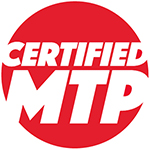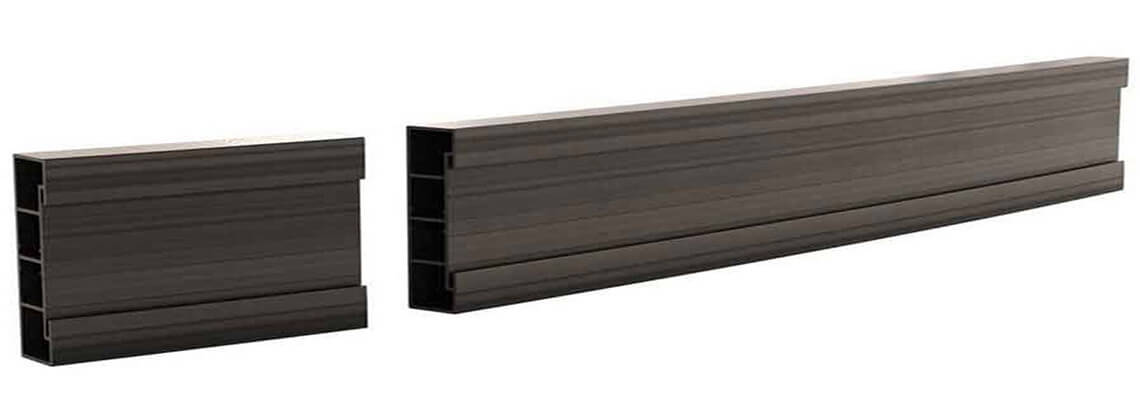Concrete forms work is the backbone of concrete construction projects. It ensures that our concrete takes the desired shape once it hardens. From slabs and test cylinders to complex foundations and countertops, concrete forms turn fresh concrete into stable, durable finished products for use in the construction and material testing industries. Without them, we would have no way of ensuring our concrete is the right shape and size for its intended purpose.
But let’s step back. What is a concrete form, and what do you need to know when you use one?
In this blog, we’ll explore everything you need to know about concrete forms. You’ll learn the different types, how to cut costs, and our top tips to ensure you achieve flawless formwork every single time.
What are concrete forms?
Poured concrete is fluid before it sets. It can flow into tight spaces, fill voids and maneuver around obstacles. These characteristics make concrete an excellent material when it comes to ensuring complete coverage in complex foundations. But how do we ensure the concrete only goes where we want it? Concrete forms, of course!
Concrete forms hold wet concrete in place until it fully hardens and reaches maximum strength. They are an essential part of almost every construction project and structure design. A construction expert can create a concrete form of any shape and size. From large-scale foundation work to small cylinder and cube molds for material testing, concrete forms allow us to create robust and durable concrete at a desired shape time and time again.
There are many things to consider when choosing the correct concrete forming. Concrete is heavy, weighing around 150 pounds per square foot. Your form must hold the concrete’s weight to prevent blowouts and leaks. Let’s look at some of the things you should consider when using concrete forms in your next construction project.
11 things you should know about concrete forms
Let’s explore eleven things you should know when using concrete forms in your next concrete construction project.
1) Concrete forms are versatile and reliable
Concrete can be tough to manage. It’s heavy and viscous, meaning it can be challenging to control without proper planning. Concrete forming ensures that concrete mixtures hold their place while they are set.
Whether it’s creating supports for a new fence structure, a foundation for a structure, or concrete slabs for paving, concrete forms are a versatile and vital part of almost all construction projects.
2) Concrete forms aren’t just for large-scale structures
Most people picture large foundations and complex structures when imagining concrete forms – but this isn’t the only way to use formwork. Concrete forms are also essential in the material testing industry because they allow testers to create standardized, reliable concrete shapes for concrete strength tests.
For example, concrete cube molds and concrete test cylinders are vital when creating samples for compressive strength testing, while concrete beam molds are a crucial component of flexural strength tests. Adding a concrete mixture to a form allows the tester to create consistent, reliable molds for material testing every single time.
In addition, consider using concrete forms as a way to enhance your concrete structures with decoration. Ornamental and decorative concrete forms are an excellent way to create visually stunning architectural elements to spruce up your concrete surfaces.
3) Timber is the standard material for concrete formwork
Wood forms are the most common type of concrete form. Timber is easy to shape, lightweight, cost-effective, and surprisingly durable. The flexibility of wooden forms also reduces the risk of strains and breakages.
When choosing the right timber formwork, always ensure the wood doesn’t have any loose knots or weak points, as these could break or loosen, allowing concrete to escape. In addition, timber forms may buckle or warp if they absorb moisture when in contact with the concrete. Always use a quality sealant to reduce the risk of absorption.
4) Other concrete form materials are gaining popularity
While timber is still the most common choice for formwork, other materials are gaining popularity. Let’s explore some other important concrete form types used in construction and material testing.
Insulated concrete forms
Insulated concrete forms (ICFs) consist of hollow blocks made from insulating material that fit together like bricks. The construction expert builds ICFs on top of the foundation slab and then reinforces the inside of the blocks with steel. The builder can then ‘sandwich’ the concrete between the two sides of the ICF concrete form and wait for it to set as usual.
ICFs are becoming increasingly popular when creating large-scale foundations and concrete wall forms. Their modular nature means they can easily be adapted to create complex shapes. In addition, there’s no need to remove them once the concrete is fully set. The ICFs will provide excellent insulation and soundproofing for the structure. That said, they have a higher initial cost than other formwork and require a lot of specialist knowledge to install successfully, so they may not be suited to every budget or level of expertise.
Steel concrete forms
Steel concrete forms consist of steel plates or panels assembled to create concrete formwork. Steel offers excellent durability and stability, making it an ideal option for forms requiring high strength.
Like ICFs, steel concrete forms are typically pre-built. The construction team simply purchases the right combination of steel forms and joins them with nuts, bolts, form ties, clamps, fasteners, or clips.
The most obvious benefit of steel concrete forms is their reusability. Steel forms can be used for thousands of work cycles with consistent maintenance and cleaning, making them a cost-effective, sustainable solution for construction workers. In addition, steel doesn’t absorb moisture, so there’s no need to apply a sealant as you would need to with wooden forms. However, steel forms require technical experience and are much heavier than other form types, meaning a lot of additional effort is required for transportation, handling, and installation.
Plastic concrete forms
Plastic concrete forms are typically produced with high-density polyethylene (HDPE), polypropylene (PP), or polystyrene (PS) materials. Plastic is resistant to moisture, highly durable, flexible, and lightweight, making it a versatile material for various concrete construction applications. The material also has a smooth surface, meaning concrete created with plastic forms typically has a more uniform, polished finish than other form types.
The affordability, portability, and reusability of plastic forms mean they are a staple in material testing. Many beam, cube, and cylinder molds are plastic because they form smooth, reliable concrete shapes with no surface irregularities that could affect the reliability of the finished product. That said, concrete isn’t as strong as other concrete form materials like steel or timber. For this reason, plastic may be unsuitable for construction applications that demand a high load capacity.
5) Concrete mixes matter
The mix you use in your construction project can significantly impact your concrete’s workability, flowability, and setting time. When choosing the right combination for your application, consider how complex your formwork is. Higher water content increases flowability, making it easier for your concrete to fill complex formwork. That said, too much water can negatively impact the compressive strength of your mix. It’s important to find the right balance for your project.
6) Let the mixture fully set
Ensure you always allow the right amount of time for the mix to set before removing the concrete form. The type of cement you use, ambient temperature, and water-to-cement ratio can each make the setting process take longer than anticipated. Always check your mixture’s exact specifications and curing time to prevent unnecessary damage or structural failure from premature form removal.
7) Reinforcement is key
Concrete reinforcement plays a crucial role in ensuring the structural integrity and load-bearing capacity of your formwork. Consider adding steel rebars and wire mesh in a grid pattern to add stability and tensile strength to your formwork.
8) Careful planning helps to cut costs
Pre-manufactured forming systems are a great way to reduce labor costs, but costs can quickly add up if they aren’t reusable. Consider the wastage in your projects. Optimizing your framework design to minimize material waste and improve project efficiency may seem inconsequential in the short term, but the cost of additional materials can hugely impact your profit in the long run. Methodical planning also reduces the possibility of making expensive mistakes.
9) Form release agents are vital
Designing and filling a concrete form is easy. Safely removing the temporary form once the concrete is set can be more challenging if you haven’t done the necessary prep work. Always apply a form release agent to the surfaces of your concrete form. Doing so ensures the concrete won’t stick to the form when you remove it, reducing the risk of surface defects.
10) Formwork inspection is essential
Your formwork may look flawless at first glance, but it’s vital to perform a closer inspection to identify potential problems. Minor defects, damages, misalignments, and loose fittings may be tough to spot from a distance, but any weak links will quickly become apparent once you pour in your concrete mixture. Check that every component and material is perfect before you add any concrete to your formwork.
11) Concrete is dangerous: take safety precautions
Concrete can be dangerous and should be handled with caution. Follow necessary safety precautions, get effective safety equipment, and ensure all staff are well-trained before working with concrete forms.
Where can I find the best concrete form for concrete testing?
The key to successful concrete is choosing high-quality, reliable molds. If you’re looking to create consistent concrete testing samples, CertifiedMTP can help. We stock a wide range of concrete forms for material strength testing, including cylinder molds, beam molds and cube molds.
All of our molds adhere to ASTM standards, so you can be confident that every sample you create will be as consistent, reliable, and high-quality as the last. We also offer molds in various different materials, including plastic, stainless steel, and cardboard. Whatever your needs, we have a concrete form suited to your testing application.
We also offer a range of formwork accessories. From string holders and cleaning detergents to countertop forms and fastening nails, our range of tools ensures you get the results you need time and time again.
Can’t find what you’re looking for? Don’t hesitate to reach out. At CertifiedMTP, we’re committed to helping you find the best equipment for your next material testing project.
View the full line of Concrete Forming items and Concrete Tremie Pipe and Products
View the popular Bon Tool 12-700 Concrete Form – Straight Steel – 10′ X 4″
Related Blogs for Concrete Forms:
Concrete Form Tools for a Flawless Pour: A Guide
What are Concrete Forms: 11 Things You Need to Know
Guide to Steel Column Sizes: Dimensions for Your Projects
Top Adjustable Steel Column Choices for Sturdy Support
Large Concrete Molds and Forms: Maximizing Efficiency
Structural Steel Column for Your Project: Guide for Choosing

